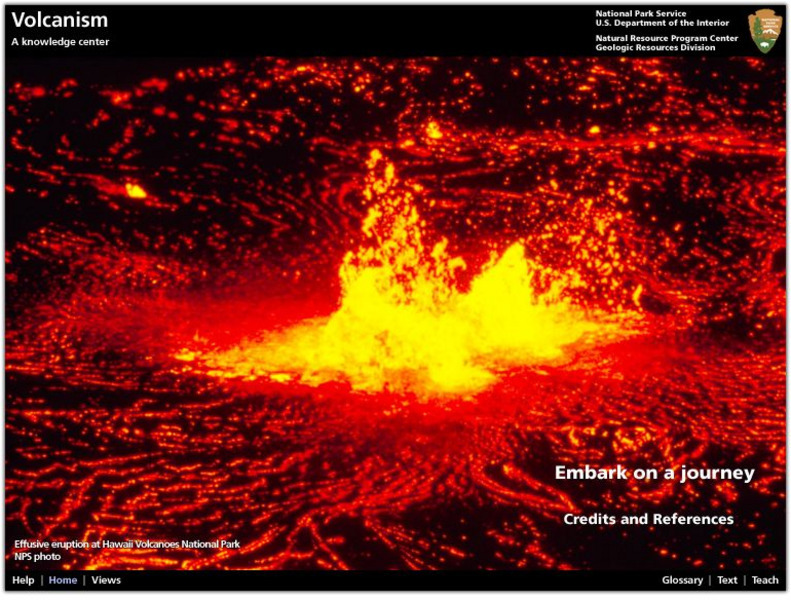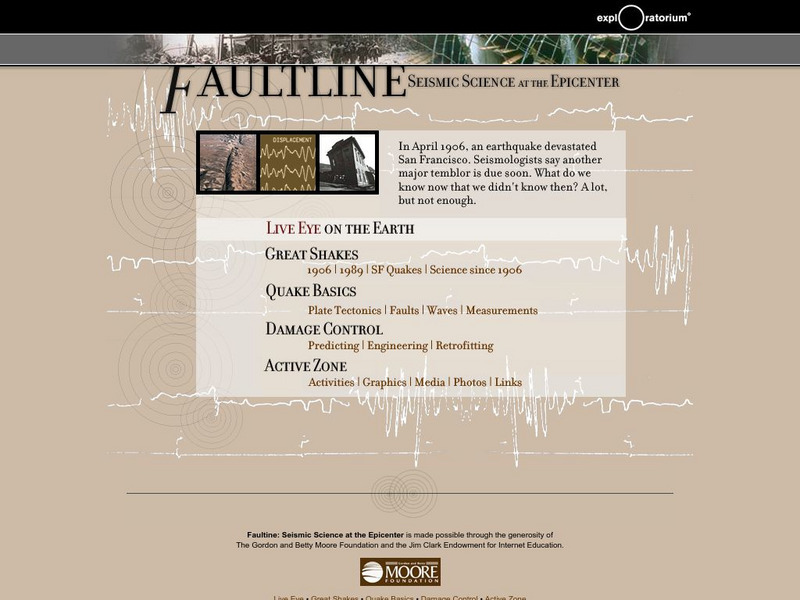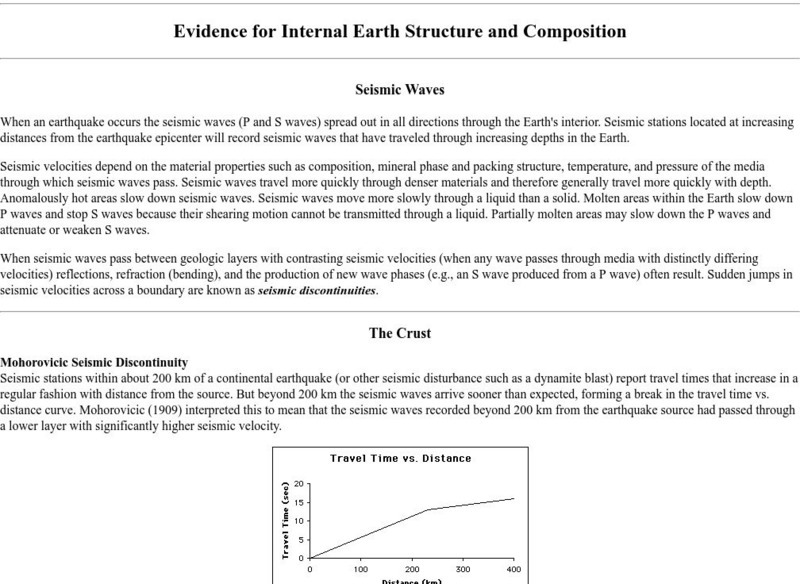US Geological Survey
U.s. Geological Survey: Earthquakes for Kids
Comprehensive information on earthquakes. Includes photos from famous earthquakes, ask-an-expert feature, earthquake science, history of major earthquakes, a pictorial ABC, adults' guides for dealing with children's emotions, animations...
Curated OER
National Park Service: Explore Nature: Views: Volcanism: Embark on a Journey
A journey into the depths of a volcano teaches students about volcanic rocks, eruptions, features, and locations. Also find out how volcanologists monitor activity and conduct scientific research on eruptions.
Smithsonian Institution
National Museum of Natural History: This Dynamic Planet
Research and explore past earthquake and volcanic activity on this interactive world map. User can manipulate which notable events and other map characteristics to view depending on the type of study being done.
Khan Academy
Khan Academy: Complexity and the Future
Will our descendants enjoy lives that are richer, more fulfilled, healthier, and in general better than those of today? Or will human societies collapse under the strain of depleted resources, brutal conflicts, and environmental damage?...
Other
University of California: Ocean Drilling Program
Scientists probe the ocean floor off Costa Rica and find evidence that may tell us more about what goes on in ocean trenches.
National Earth Science Teachers Association
Windows to the Universe: The Andes Mountains
Satellite photography and brief outline information describe the Andes mountains and provide links to specific features within the landscape - Atacama desert, or evidence of volcanic activity for example.
Curated OER
Hartao: An Introduction to Plate Tectonics
Introduces South African Alexander Toit as naming Gondwanaland and Laurasia.
University of Kentucky
University of Kentucky: Earth Science Classroom Activities
A collection of links to activities and lessons that could be used for Earth science concepts including the foil record, creating a timeline of Earth's history, plate tectonics, dinosaurs, and the progression of life on Earth.
ClassFlow
Class Flow: Earthquakes & Volcanoes
[Free Registration/Login Required] This flipchart shows diagrams of plate tectonics and how earthquakes and volcanoes are formed. Activotes are needed to answer several questions.
Other
University of Chicago: Dinosaur Extinction
This theory from the University of Chicago of dinosaur extinction revolves around the concept of plate tectonics, the movement of the continents over a sort of liquid around the planet.
CK-12 Foundation
Ck 12: Earth Science: Magnetic Evidence for Seafloor Spreading
How magnetic reversals on the seafloor provide evidence for seafloor spreading. [Free Registration/Login may be required to access all resource tools.]
CK-12 Foundation
Ck 12: Earth Science: Magnetic Evidence for Seafloor Spreading
[Free Registration/Login may be required to access all resource tools.] How magnetic reversals on the seafloor provide evidence for seafloor spreading.
Exploratorium
Exploratorium: Faultline
This site includes all things shaky--earthquakes that is. Observe real-time data regarding seismic activity all over the world. Other modules include information about history's great quakes, earthquake basics and how to recover from...
California Institute of Technology
Cal Tech: The Great 1857 Fort Tejon Earthquake
Basic information about the 1857 "Fort Tejon" Earthquake, along with comparison to other quakes, location of the epicenter, and faults involved.
NASA
Nasa: Magnetic Reversals and Moving Continents
This site gives a good overview of magnetic reversals. Discusses continental drift, ocean floor magnetism, and sea-floor spreading.
Columbia University
Columbia University: Evidence for Internal Earth Structure and Composition
College-level research information describes how the movement of Earth's interior causes seismic wave activity.
NOAA
Noaa: Make Your Own Volcano [Pdf]
Learn how different types of volcanoes develop and construct a simple volcano on your own.
American Museum of Natural History
American Museum of Natural History: O Logy: What's the Big Idea? Earth
Find an overview of the Earth and some of the approaches scientists take in studying it, in this click-through series of short perspectives on the topic.
Science Education Resource Center at Carleton College
Serc: Hotspot Lesson: Mantle Plumes
A lesson that explains a theory on magma generation at hotspots called the mantle plume theory. The goal of this lesson is to introduce students to a theory that scientists are actively trying to prove or refute. Through this, students...
Wikimedia
Wikipedia: Continental Drift
A brief Wikipedia encyclopedia article on continental drift. It tells what continental drift is, what causes it, and gives examples of evidence that continental drift has occurred.
National Institute of Educational Technologies and Teacher Training (Spain)
Ministerio De Educacion: Los Cambios en El Medio Natural Ii
In this unit you can learn about the deformation of rocks, magmatism, plutonism and seismic waves. It has 16 interactive activities.
PBS
Pbs Teachers: Seismometer
Build an instrument for measuring movement to learn about how scientists measure the Earth's movement with a seismometer.
PBS
Continents on the Move
Scientists believe that all the continents were once combined in one supercontinent. That means that the continents must be moving. Find out how scientists can measure the movement of whole continents!
US Geological Survey
Usgs: November 29, 1975 Kalapana
Describes details of the earthquake of November 29, 1975 Kalapana in Hawaii, the tsunami, and the eruption of the volcano Kilauea as a result of the earthquake.
Other popular searches
- Map of Tectonic Plates
- Floating Tectonic Plates
- Geography Tectonic Plates
- Pacific Basin Tectonic Plates
- Movement of Tectonic Plates
- Tectonic Plates Converge
- Tectonic Plates Move Apart
- Tectonic Plates Oranges
- Edible Tectonic Plates
- Tectonic Plates and Volcanoes























